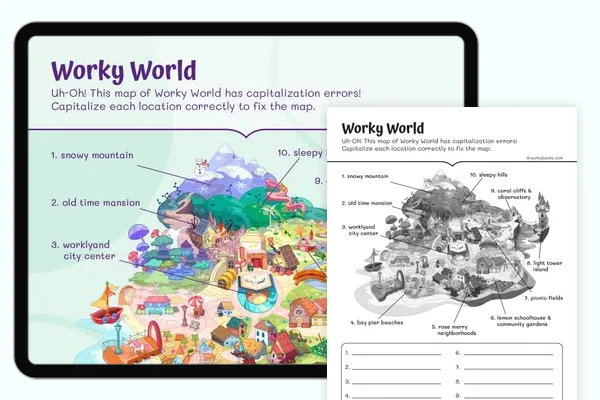Silent E Apple Sort Worksheet
- 1
- L.2.2.D
- L.2.2
- RF.1.3.C
This learning resource is available in interactive and printable formats. The interactive worksheet can be played online and assigned to students. The Printable PDF version can be downloaded and printed for completion by hand.
About the Worksheet
This interactive and printable worksheet, is designed to help students identify and sort words with silent 'E' endings from those without. The interactive format engages students in a hands-on activity, making it a fun and effective learning experience. The printable PDF version allows for offline practice and reinforcement.
Through this worksheet, students will develop their ability to recognize silent 'E' patterns in words, enhancing their reading and spelling skills. The visual representation of apples with words on them creates an engaging and memorable learning experience.
What Will Your Child Learn Through This Worksheet?
This interactive and printable worksheet, aims to teach students the following:
- Identify words with silent 'E' endings
- Distinguish between words with and without silent 'E' endings
- Reinforce the concept of silent letters in the English language
- Develop reading and spelling skills
- Enhance visual recognition and discrimination abilities
Learning Outcomes
The learning outcomes for this worksheet are:
Cognitive:
- Students will be able to recognize and differentiate between words with and without silent 'E' endings with 80% accuracy.
- Students will demonstrate an understanding of the role of silent letters in the English language.
Psychomotor:
- Students will develop fine motor skills through coloring and sorting activities.
Affective:
- Students will develop a positive attitude towards learning and practicing reading and spelling skills.
- Students will gain confidence in their ability to identify and understand silent letter patterns.
Tags
Silent E, Reading, Spelling, Word Recognition, Phonics, Visual Discrimination, Fine Motor Skills, Interactive Worksheet, Printable Worksheet, Silent Letters, Literacy Skills, Kindergarten, Elementary School, Educational Resource
Common Core Standards Covered
Perfect For:
- • Classroom assignments
- • Auto-graded assessments
- • Printable handouts
- • Home learning support
- • Homework help
- • Skill reinforcement
- • Curriculum planning
- • Self-paced learning
- • Progress tracking




















